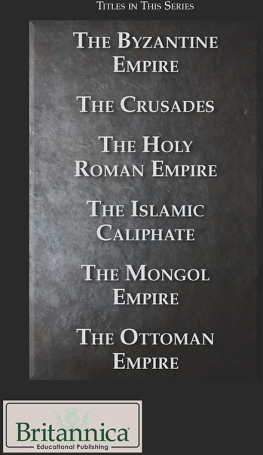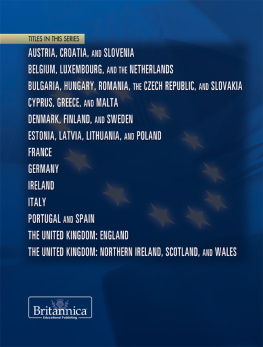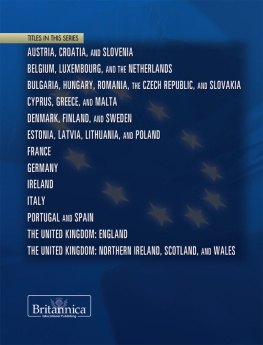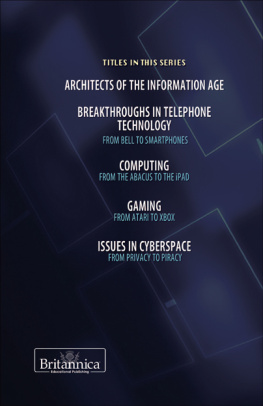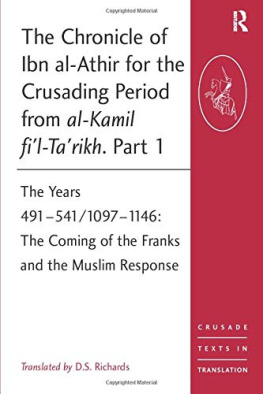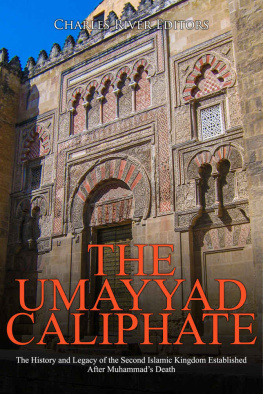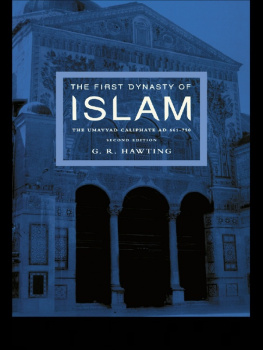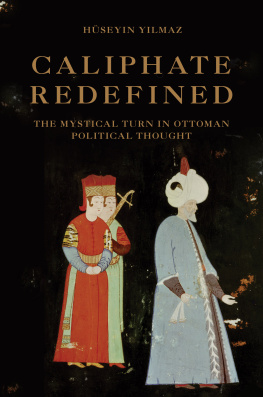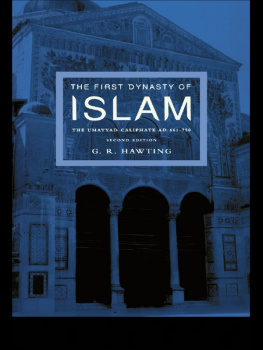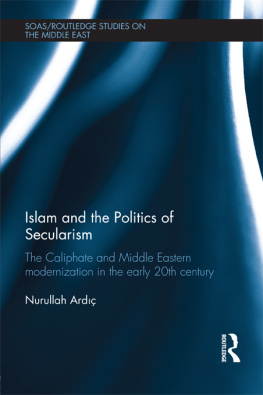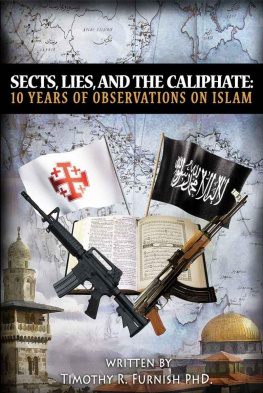
Published in 2018 by Britannica Educational Publishing (a trademark of Encyclopdia Britannica, Inc.) in association with The Rosen Publishing Group, Inc. 29 East 21st Street, New York, NY 10010
Copyright 2018 by Encyclopdia Britannica, Inc. Britannica, Encyclopdia Britannica, and the Thistle logo are registered trademarks of Encyclopdia Britannica, Inc. All rights reserved.
Rosen Publishing materials copyright 2018 The Rosen Publishing Group, Inc. All rights reserved.
Distributed exclusively by Rosen Publishing.
To see additional Britannica Educational Publishing titles, go to rosenpublishing.com.
First Edition
Britannica Educational Publishing
J.E. Luebering: Executive Director, Core Editorial
Andrea R. Field: Managing Editor, Comptons by Britannica
Rosen Publishing
Carolyn DeCarlo: Editor
Nelson S: Art Director
Brian Garvey: Designer
Cindy Reiman: Photography Manager
Nicole DiMella: Photo Researcher
Library of Congress Cataloging-in-Publication Data
Names: DeCarlo, Carolyn, editor.
Title: The Islamic Caliphate / edited by Carolyn DeCarlo.
Description: New York : Britannica Educational Publishing, in Association with Rosen
Educational Services, 2018. | Series: Empires in the Middle Ages | Includes bibliographical references and index. | Audience: Grades 5-8.
Identifiers: LCCN 2017019759 | ISBN 9781538300473 (eBook)
Subjects: LCSH: Islamic Empire--History--Juvenile literature. | Umayyad dynastyJuvenile literature. | AbbasidsJuvenile literature. | FatimitesJuvenile literature.
Classification: LCC DS38.3 .I833 2018 | DDC 909/.09767dc23
LC record available at https://lccn.loc.gov/2017019759
Manufactured in the United States of America
Photo credits : Cover Culture Club/Hulton Archive/Getty Images; p. 5 Encyclopdia Britannica, Inc.; p. 6 Courtesy of the Chester Beatty Library, Dublin; p. 7 hikrcn/Shutterstock.com; p. 10 ullstein bild/Getty Images; p. 12 Private Collection/The Stapleton Collection/Bridgeman Images; p. 14 The Madina Collection of Islamic Art, gift of Camilla Chandler Frost (M.2002.1.383), www.lacma.org; pp. 1617 United States Army; p. 19 Ciccione-Rapho/Photo Researchers; p. 21 Michael Freeman-Digital Vision/Getty Images; p. 22 semultura/Fotolia; p. 24 Photos.com/Thinkstock; p. 26 Robert Smith; p. 27 Private Collection/Photo Christies Images/Bridgeman Images; p. 30 Universal History Archive/Universal Images Group/Getty Images; p. 32 Pictures from History/Bridgeman Images; p. 35 Fuse/Thinkstock; p. 36 Photos.com/Jupiterimages; p. 38 Courtesy of the Edinburgh University Library, Scotland; p. 40 Bettmann/Getty Images; p. 41 Ahmad Al- Rubaye/AFP/Getty Images

C HAPTER 1
THE RIGHTLY GUIDED CALIPHATE
C HAPTER 2
THE UMAYYAD CALIPHATE
C HAPTER 3
THE ABBASID CALIPHATE
C HAPTER 4
THE FATIMIDS AND THE DECLINE OF THE CALIPHATE
F or several hundred years, the Muslim community and its land formed a state called the Caliphate. The Caliphate was created in 632 CE to prevent a leadership crisis brought on by the death of Muhammad, the founder of Islam. The successor chosen was Abu Bakr, Muhammads father-in-law and closest adviser. His title was caliph, a term that means both successor and deputy. The Caliphate lasted until 1258, when the Mongol conquest of Baghdad effectively ended the empire.
The followers of Islam believed they had a mission to spread their religion. They conquered surrounding territories in order to do so. In addition to being religious leaders, therefore, the caliphs were also political rulers of an increasingly large empire. During its first two centuries, the empire grew rapidly to include not only Arabia (the birthplace of Islam) but also most of Southwest Asia, North Africa, and Spain. The Caliphate expanded through military conquests and treaties. Resistance to the Caliphate tended to be only slight and nondestructive, and some areas surrendered without fighting.
The Caliphate began with and was ruled by Arab Muslims. As the empire grew, people of many different cultures and religions were absorbed under its rule. In fact, Arabs came to be in the minority. Many people in the conquered territories kept their own religion, but large numbers converted to Islam. Jews, Christians, and people of other tolerated religions were generally allowed to practice their faith, but they had to pay a special tax. People of other religions were forced to convert to Islam.
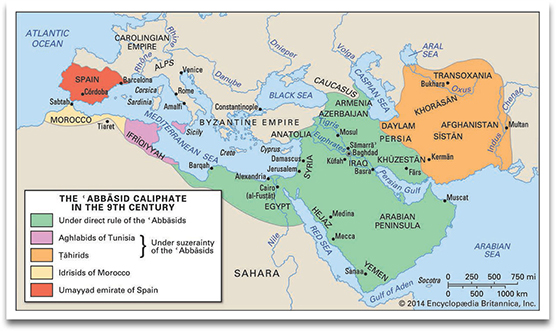
This map depicts the territories held by the Abbasid Caliphate in the ninth century, at the height of the empire.
As the Caliphate became increasingly prosperous, Islam, Islamic culture, and the Arabic language became prestigious. The more the Muslim rulers were successful, the more the people within the empire wanted to adopt the customs of the ruling class. Many people converted to Islam because membership in the Muslim community offered the best chance for social advancement. Arabic was used as the language of Islam and the government, as well as of literature, scholarship, and other high culture. Arabic was also widely adopted as a lingua franca a second, common languagethat allowed different peoples throughout the empire to communicate with one another.
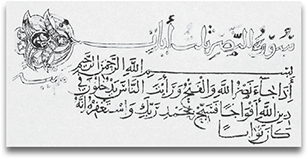
This example of naskhi script, a calligraphic style developed in the tenth century for writing in Arabic, is printed in a copy of the Quran found in Baghdad, c. 1000.
During the first 250 years of the Caliphate, Islam was thus transformed from the religion of a small Arab ruling class to the dominant faith of a vast empire. As a result of this long, gradual period of conversion, Arab cultures intermingled with the cultures of the conquered peoples to produce a new Muslim civilization. The Arabs came to rule over a rich complex of old cultures; they introduced new cultural elements, and reoriented old ones in creative ways.
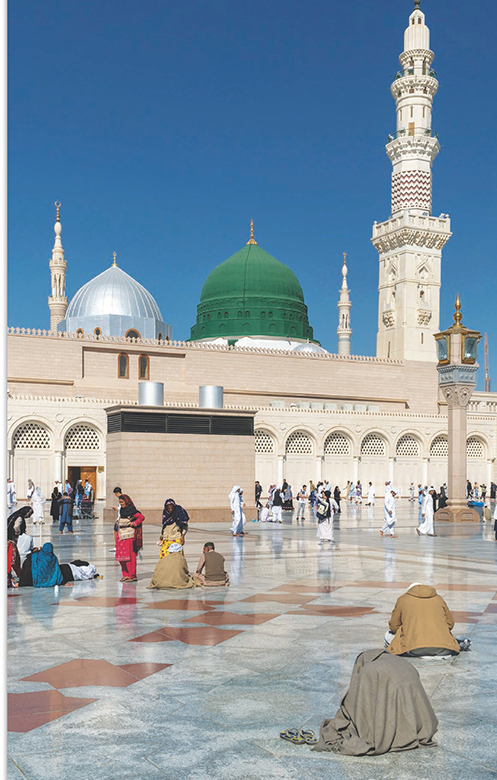
Pilgrims visit the Prophets Mosque in the holy city of Medina, Saudi Arabia. The mosque holds the tomb of Muhammad.
Over its history, the Caliphate was ruled by many caliphs. Abu Bakr, the first caliph, was from Muhammads tribe, the Quraysh. Later generations believed the head of the Islamic community had to be from the Quraysh tribe. The continuity of descent within the tribe did not, however, mean that the caliphate (the office of caliph) passed in unbroken succession over the centuries; there were several succeedingand sometimes simultaneouscaliphates representing different clans within the tribe. For historical clarity, four distinct caliphates may be noted: the Rightly Guided, the Umayyad, the Abbasid, and the Fatimid. In addition, a number of local dynasties opposed the caliphs or simply ignored them.
T he first four caliphs were Abu Bakr, Umar I, Uthman (a member of the Umayyad clan), and Ali, cousin and son-in-law of Muhammad. Collectively, the four are known in Arabic as al-khulafa al-rashidun , or the rightly guided caliphs. These caliphs were the formative leaders of the Muslim community, or ummah .

